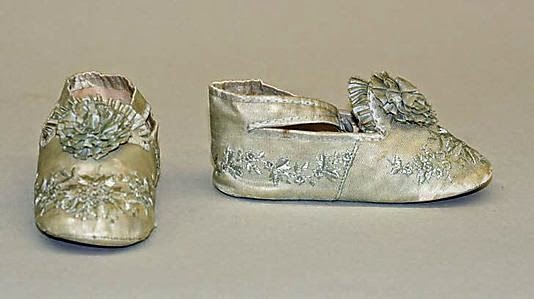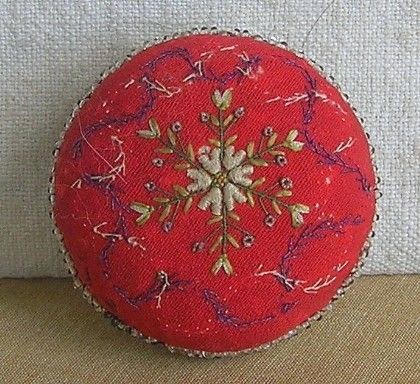In the study of fashion, I have come to realise that I really like the transitional periods best, when shapes and forms were fluid and changing from one long-established mode to a new and different one. This is true from the Jacobean through the modern periods. Here we will examine the the aspects that changed in these periods and see if there are any common features to transitional fashions.
In the period of James VI/I, we begin to see softer silhouettes than the previous Tudor styles, moving towards the loose, billowy styles of the Stuart monarchy in the mid 17th Century.
In the Rubens portrait, we see in his flowing doublet skirts the beginning of a coat, and in the longer breeches, the petticoat breeches of mid-century. Our lady in the second example still has the form of the Tudor dress style, but gone is the conical bodice shape and farthingale. The prevailing mode is a softening of the more geometric forms of the previous period.
A century later, in the transition from the Stuart to Georgian (Hanoverian) periods, we again find change in dress, this time from a large blowsy silhouette (as it had become) to a slimmer one that was less ornamented (briefly).
Here we do not see the enormous cuffs on the man's coat that we saw earlier, and will again later, nor in the woman's ensemble the beribboned bodice of the late Stuart or the wide hoop to come that would define Court dress for a century. There is a purity of form, the clothing reduced to essentials.
In the 1790s again we see change, not entirely, as has been supposed, due to the influence of the demise of the Ancien Régime, but of the natural flow of fashion trends. From the 1770s, the silhouette had been simplifying and reducing, refining once again to its most essential components, until in the late 1780s, an almost severe form emerged.
In short order, the breeches in that severe suit would become pantaloons (trousers), and the modest embroidery would disappear from men's waistcoats virtually forever. in the woman's gown, all the experimental stages of zones, chemises a la reine, and overskirts have disappeared, leaving a simple gown that shows clearly the direction the waist will go and the form that will dominate for the next thirty years.
Our periods of change are now becoming more rapid, and will do so increasingly into our contemporary period, where fashions shift almost with the seasons.
On the late 1820s and early 1830s, the transition went from straight, severe unornamented forms to a descent to the natural waist for women, a widening of the shoulders, for both men and women, a lengthening of the men's frock coats, and a widening of the skirts of women's gowns.
The natural form of the body is celebrated in both cases, giving charm and attractiveness to the costume, but it is significant that with the exception of waistcoats and cravats, men's clothing will remain subdued with a few extraordinary exceptions (the Pre-Raphaelite Brotherhood, the Artistic Dress of Oscar Wilde and company).
The 1880s were the height of Artistic and Reform Dress, co-inciding with each other in form if not in expression.
In the Artistic Dress examples, we see rich fabrics used in loose and comfortable clothing, which does not exaggerate any part of the body; it follows the natural form. This is also true of reform dress, in the second set of examples. Comfort, if not highly artistic expression, is favoured in, for the man, a loose soft collar and cravat and plain sack coat. In the women's coats, there is no exaggeration of bustles, the hemline is off the ground and the ornamentation is minimal.
Our final example, of the very late 1910s and early 1920s, also shows the same loosening of strictures of dress of the previous decades, with more than hints of fashion to come.
In the man's fur coat, there is an almost last-hurrah of personal style before the 1960s loosened men's attire once more. In this period, we see the advent of the ascot, worn for informal dress, the college jacket (typically striped), and innumerable Fair Isle knitted waistcoats, which allowed men some personal style expression. Informality of dress was almost a catchphrase of the 1920s, and here we see its advent at the end of the Great War.
In the women's frocks, we still see the dainty ornament of the 1910s lingerie frocks, but the structure has loosened and overblouses and tunics presaged the dropped or eliminated waist to come. The clothing is still pretty, feminine and comfortable, with the natural as the focus.
In our brief survey, we have found that the commonalities of transitional periods are: a reduction of the style to its essential form, emphasis on the natural form of the body, a reduction of (or increase of) ornamentation in response to the previous period, a loose, soft style, and a (relatively) slow movement from one style to another based on an organic process (not imposed from without by fashion designers). These elements, then, might justifiably be seen as the hallmarks of natural fashions, suitable to all time periods and styles.
Exquisite Creations. Everyday Romanticism. Timeless elegance. The Embodiment of the Arts & Crafts.
28 April 2015
05 April 2015
Spring and Tokens of Affection
Since our move, we have all had the 'flu here at Brother Rabbit, so we apologise for the long delay in posting. But the apple and pear trees are now in bloom, and the lilacs have budded and are dotting the Hill with Easter colour.
Presently, we are working to have our Accessory items in museum shops across the United States, including Mount Vernon, Colonial Williamsburg, Monticello, as well as the Smithsonian and living history sites from Plimouth Plantation to the Dunsmuir Helman House.
We have a wide array of museum quality Gentlemen's, Ladies' and Children's items suitable for gifts, souveniers, and tokens of affection.
We have a wide array of museum quality Gentlemen's, Ladies' and Children's items suitable for gifts, souveniers, and tokens of affection.
Subscribe to:
Posts (Atom)




































